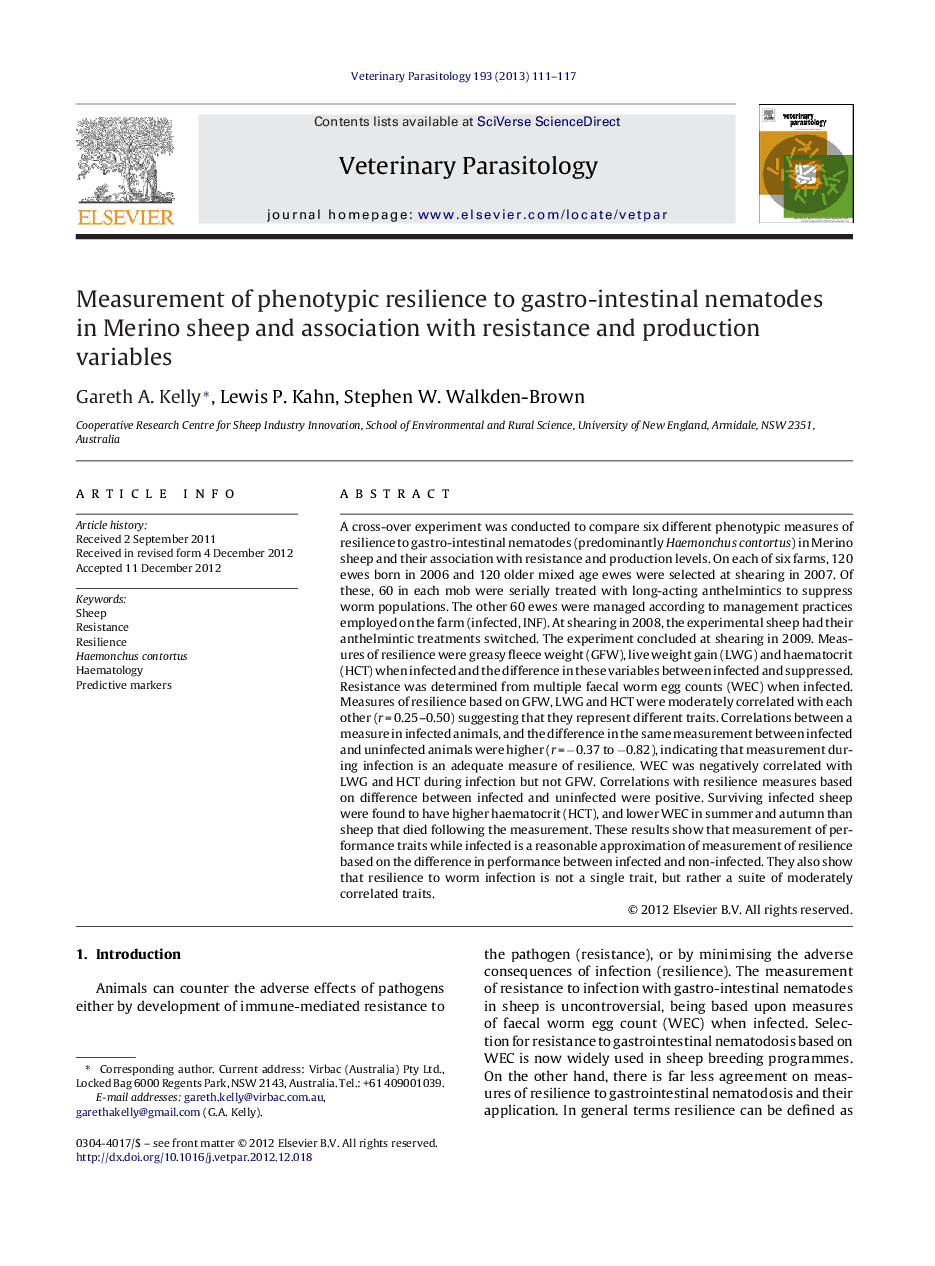| کد مقاله | کد نشریه | سال انتشار | مقاله انگلیسی | نسخه تمام متن |
|---|---|---|---|---|
| 5804290 | 1555703 | 2013 | 7 صفحه PDF | دانلود رایگان |
A cross-over experiment was conducted to compare six different phenotypic measures of resilience to gastro-intestinal nematodes (predominantly Haemonchus contortus) in Merino sheep and their association with resistance and production levels. On each of six farms, 120 ewes born in 2006 and 120 older mixed age ewes were selected at shearing in 2007. Of these, 60 in each mob were serially treated with long-acting anthelmintics to suppress worm populations. The other 60 ewes were managed according to management practices employed on the farm (infected, INF). At shearing in 2008, the experimental sheep had their anthelmintic treatments switched. The experiment concluded at shearing in 2009. Measures of resilience were greasy fleece weight (GFW), live weight gain (LWG) and haematocrit (HCT) when infected and the difference in these variables between infected and suppressed. Resistance was determined from multiple faecal worm egg counts (WEC) when infected. Measures of resilience based on GFW, LWG and HCT were moderately correlated with each other (r = 0.25-0.50) suggesting that they represent different traits. Correlations between a measure in infected animals, and the difference in the same measurement between infected and uninfected animals were higher (r = â0.37 to â0.82), indicating that measurement during infection is an adequate measure of resilience. WEC was negatively correlated with LWG and HCT during infection but not GFW. Correlations with resilience measures based on difference between infected and uninfected were positive. Surviving infected sheep were found to have higher haematocrit (HCT), and lower WEC in summer and autumn than sheep that died following the measurement. These results show that measurement of performance traits while infected is a reasonable approximation of measurement of resilience based on the difference in performance between infected and non-infected. They also show that resilience to worm infection is not a single trait, but rather a suite of moderately correlated traits.
Journal: Veterinary Parasitology - Volume 193, Issues 1â3, 31 March 2013, Pages 111-117
